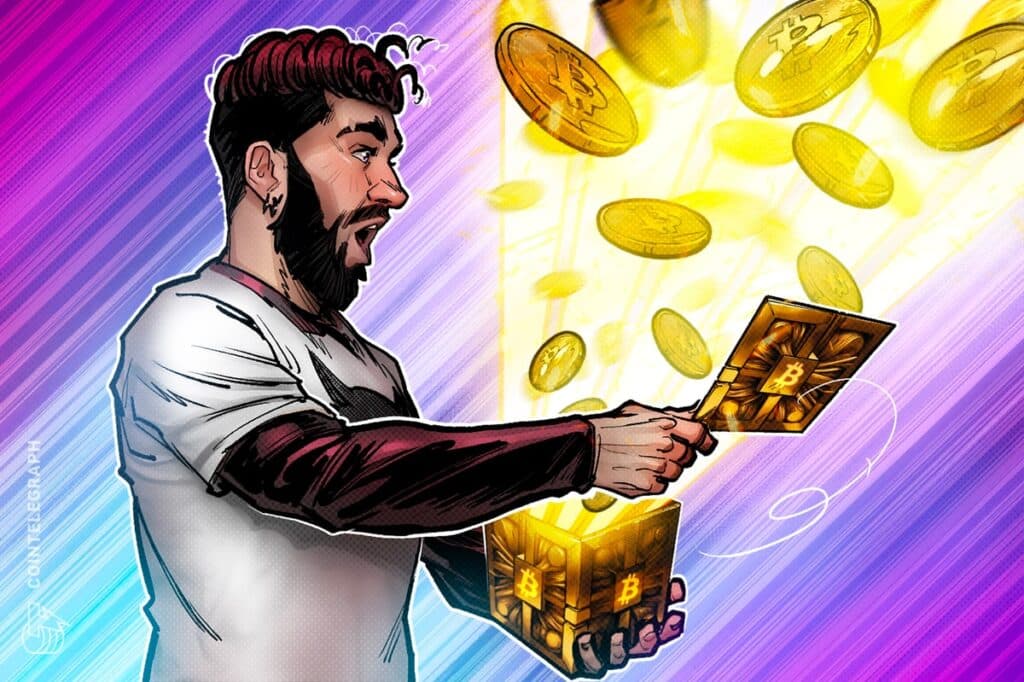What is a block reward, explained

The importance of block reward in cryptocurrency
Block reward is a critical element that supports the decentralized nature of cryptocurrencies and has great symbolic and practical value.
Basically, a block reward is a payment to crypto miners for adding approved transactions to the network. This process involves mining, completing challenging mathematical puzzles, adding computing power to the network, and maintaining the integrity of the distributed ledger.
The importance of block rewards is that they serve as a primary source of incentive for miners, creating a competitive atmosphere that protects the security and stability of the network as a whole. In addition to compensating miners for their computing efforts, it is important to create new coins and manage the circulation and distribution of cryptocurrency efficiently. This dual role supports the digital currency's overall supply and demand dynamics as well as the incentive structure for miners.
Additionally, by removing the requirement for a central authority to control or issue funds, the block reward embodies the principle of decentralization. It creates an open, transparent, self-sustaining system where users are compensated for their efforts, enhancing the creative and democratic aspects of the ecosystem.
Block reward components
Mining rewards and transaction fees are the two main components of cryptocurrency block rewards, and both serve as powerful incentives for miners.
A predetermined amount of newly minted coins is known as a mining reward, and is usually awarded to miners for successfully adding a new block to the mine. This section serves as an incentive system for miners in addition to bringing new cryptocurrency into circulation.
The second component is transaction fees, which users must pay to have their transactions included in the block. By encouraging miners to prioritize transactions with higher payouts, this feature maximizes the efficiency of the blockchain.
The combination of mining rewards and transaction fees creates a strong incentive structure for miners, promotes network security, decentralization and transaction verification. Together, these elements provide the economic framework that allows cryptocurrencies to be decentralized, with incentives for miners, for overall security and blockchain functionality.
How block rewards are calculated
Cryptocurrency block rewards are determined by complex variables where both fixed and variable components are important.
Some cryptocurrencies have fixed block rewards where a certain number of coins are issued for each block successfully mined. On the other hand, others use variable rewards, which are frequently dependent on variables such as network participation or computer complexity. For example, mining incentives for Bitcoin (BTC) roughly halve every four years. Reminiscent of digital gold, this intentional scarcity works to control the total supply. Similar to digital gold, this intentional scarcity controls the total supply.
Halving the crypto landscape can have a significant impact on market volatility and mining incentives. For example, as the reward decreases, miners are forced to rely on transaction fees, highlighting the importance of this dynamic component. Furthermore, mining incentives and problems have a mutually beneficial relationship. This keeps creation times constant due to the algorithmic tuning method.
The amount of difficulty varies dynamically with the amount of processing power (hash size) used in the mining process. As more miners join the network and the hash rate increases, it becomes more challenging to maintain the expected block generation time. On the other hand, as the hash rate decreases, the difficulty decreases.
As mining difficulty increases, rewards are frequently adjusted to balance the work required for successful block confirmation. This complex interplay between fixed and variable elements, halving opportunities and mining problems illustrates the strong computation behind determining rewards in the ever-evolving cryptocurrencies.
Bitcoin block reward system
Bitcoin block reward systems have been instrumental in the development of the cryptocurrency landscape.
At its inception, miners earned 50 BTC for successfully adding a new block to the blockchain through the fixed block reward system. However, roughly every four years, Bitcoin halves its reward in order to maintain scarcity and repeats the scarcity of precious commodities like gold. With a distribution of only 21 million BTC, this deflationary strategy aims to improve the storage-value assets of the cryptocurrency.
Other cryptocurrencies often draw inspiration from Bitcoin but feature different reward structures. For example, cryptocurrencies like Dogecoin (DOGE) and Litecoin (LTC) closely mimic Bitcoin's halving mechanism and adjust their block rewards regularly.
Conversely, Ripple's XRP (XRP) general offering was premeditated, with traditional mining and block rewards. Using a proof-of-stake (PoS) consensus process, the Ethereum blockchain selects validators to build new blocks based on the number of Ether (ETH) they contain and are ready to carry as collateral.
Technological developments and their impact on block awards
Technological innovations increase mining productivity, which can reduce transaction fees as a share of total mining revenue.
The computing power devoted to verifying the validity of the block chain directly affects the efficiency and capacity of miners. Therefore, technological advances in mining hardware and software have the potential to significantly increase mining productivity, allowing miners to process more transactions while using less energy.
Due to efficient mining, increased competition between miners can reduce transaction fees as a share of total mining revenue. However, it can increase the network's difficulty and hash rate, making it more challenging for individual miners to compete.
By affecting transaction fees, technological advances in blockchain-enhanced solutions such as layer-2 protocols (such as Bitcoin's Lightning Network) or alternative peer-to-peer mechanisms can indirectly affect rewards. Space block competition is reduced and cheaper transaction fees can come from these solutions if you can increase the network's transaction flow. This can also affect the total revenue of the miners.














